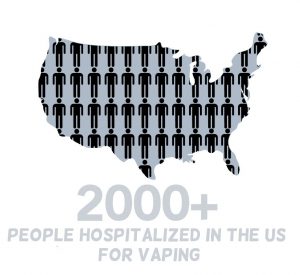When Courtney began to have trouble breathing in January, she decided to perform an experiment: she stopped vaping for a day and noticed marginal improvement. The breathing problems quickly returned when she returned to her regular usage the next day.
When Courtney quit completely, the experiment confirmed her fears. Throughout the process, Courtney experienced both physical and emotional symptoms of withdrawal, including a fever that lasted for two weeks.
“I felt sick,” Courtney said. “I couldn’t sleep, couldn’t eat, I was nauseous. I’d wake up feeling awful.”
Her physical withdrawal symptoms lasted around two weeks, but she experienced emotional withdrawals for nearly a month afterwards. She became angry incredibly easily and burst into tears at the smallest things, including if her dog walked out of her room.
“[I didn’t give in because] I didn’t want to die,” Courtney said. “I am 15 years old. I didn’t want to die at 30, or of lung cancer.”
Courtney’s fear supplied her with the willpower it took to quit using nicotine. For other users, however, the drug’s effects are too difficult to give up.
“
I didn’t want to die. I am 15 years old. I didn’t want to die at 30, or of lung cancer.
— Courtney
“It’s really hard to stop,” Dorfman said. “Millions of people have gotten addicted to nicotine, and even if they know it’s bad for them, even if they want to stop, it’s not a matter of just throwing it away.”
Others have quit because of the expense. A pack of four pods costs around $20, causing some, including Courtney, to spend up to $40 a week. For some, this can be a barrier to continue vaping.
“It costs too much and doesn’t do enough,” Reagan said. “It just felt like a waste of time.”
Whether it be due to an extreme medical issue or a simple matter of cost, there are teenagers who have decided to quit vaping. Using Juuls and other forms of e-cigarettes is still generally seen as trendy, but there is hope that the news about vaping-related deaths will contribute to a rising group of teens who view vaping for what it is—a dangerous and addictive practice.
Courtney is now one of these people.
“Even though people will say Juuls aren’t as bad as cigarettes,” Courtney said, “you’re not supposed to put things in your lungs that aren’t supposed to go in there.”









